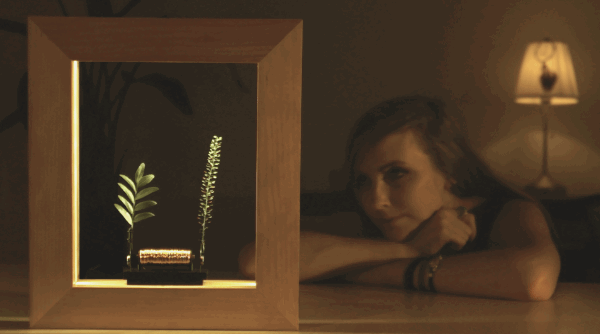Every December, we take a look back at big ideas from the past twelve months that promise to gain momentum in the new year. With more than eleven thousand projects launched between our Design and Tech categories in 2016, we have a nice sample to draw from. More importantly, we have a community of forward-thinking backers who help creators figure out which versions of the future to pursue. Here are some of the emerging trends we expect to see more of in 2017.

Ossic
Next-level listening
With the headphone jack inching closer to the endangered-features list this year thanks to Apple, a number of projects have made a compelling case for pushing beyond the limits of traditional stereo sound. Ossic brings VR’s spatial immersion to the audio realm, while Nura’s advanced headphones customize sound for listeners’ unique hearing profiles. And Basslet’s wearable subwoofer reminds us that sound is a full-body experience, bringing the visceral bass of a dance club to personal music listening. We’re excited to see more creative takes on listening devices, especially as audio-based user interfaces and voice control become increasingly common product features. Which brings us to…

Vi
Everyday artificial intelligence
Whether chatting with a device as if it’s a virtual assistant strikes you as a sci-fi dream come true or a dystopian nightmare, we’re going to see an increasing number of products that use voice-controlled artificial intelligence interfaces to fit into users’ lives more seamlessly. Among the projects leading the way in this arena are Vi, wireless earphones that double as a personal trainer; Bonjour, an alarm clock that wakes you up with a personalized daily briefing; and Dashbot, a talking car accessory that recalls Kit, David Hasselhoff’s buddy from Knight Rider.
One of the factors driving this talking AI boom is the emergence of platforms like Microsoft’s Cognitive Service, Amazon’s Alexa, and Google’s Speech API, which allow product developers to focus on user experience rather than low-level speech processing. For the DIY set, Seeed’s ReSpeaker offers a turnkey devkit for working with these services, and we’ll surely see more tools for integrating AI voice interfaces into all manner of products.

Blubel
Collective intelligence and community-sourced data
But artificial intelligence can only do so much. Actual human brains are still pretty useful, especially when lots of them work together. Blubel, Oombrella, and Wynd are connected devices that collect info from individual users about safe routes for bikers, hyper-local weather conditions, and air quality, respectively, pooling these distributed data points to make the whole system smarter. We expect to see designers and users continue to embrace this kind of transparent, purposeful approach to gathering data, especially as the increasingly porous boundaries between our online and physical lives stoke concerns about personal privacy and data harvesting.
Hackable devices for kids
Whether you believe that learning to code is a necessary skill for 21st century kids or just want to encourage your gadget-obsessed youngsters to spend less time passively staring at screens, the increasing number of hackable products that offer children engaging, creative intros to technology are an encouraging trend. Kano, Technology Will Save Us, and Makeblock all introduced DIY kits that balance beginner-friendly guided learning with remarkably open-ended possibilities for discovery and invention. Meanwhile, Cubetto and Root’s charming robots invite children as young as three to explore basic programming concepts through playful physical interfaces.
Beyond education, hackability has the benefit of keeping a toy fresh and interesting as kids grow. We expect to see more kids’ products incorporate customizable elements that invite youngsters to reinvent and remix their playthings.

Wazer
A factory on your desktop
At this year’s World Maker Faire in New York, we presented the Future Fab Lab, a collection of digital fabrication machines (beyond 3D printers) that translate manufacturing techniques typically found on factory floors to makers’ desktops. Among them were Wazer’s waterjet cutter, capable of precisely shaping metal and stone; Mr Beam’s user-friendly laser cutter; and Mayku’s FormBox, a compact vacuum former for shaping plastic. While these machines all focus on producing hard goods, we expect to see this shrinking-industrial-equipment concept applied to realms of manufacturing such as textiles, fashion, and food.

Space research and history
While it may not house alien megastructures as once hypothesized, KIC 8462852 remains the most mysterious star in the galaxy. Astronomer Tabetha Boyajian’s campaign invited space enthusiasts to follow her journey to understand the strange light patterns coming from this celebrated celestial body. 2017 promises to be an equally stellar year for this democratized approach to space exploration. Lightsail, the Planetary Society’s sun-propelled satellite, is slated to launch, bringing to fruition an idea that Carl Sagan first popularized in 1976. Concurrently, Ozma Records is creating a deluxe reissue of the Voyager Golden Record, another 40-year-old Sagan-led project, which collected sounds from around the Earth as an interstellar message for extraterrestrials. With the support of more than 10,000 backers, it became our most-funded Music project ever. We suspect it’s a harbinger of even more intriguing projects that tap into the public’s fascination with space exploration’s storied past and promising future.

Slow Dance
Tech art for the home
One of the most unpredictable success stories of 2016 on Kickstarter was Sisyphus, Bruce Shapiro’s meditative kinetic sculpture that slowly draws intricate patterns on a sand-covered table with a metal ball. The project gained a huge following and went on to become our most-funded Art project ever. Jeff Lieberman’s Slow Dance frame also uses engineering for poetic purposes, creating the illusion that real objects are moving in slow motion before your eyes. Back in 2014, Electric Objects explored this territory with digital displays devoted to showcasing an ever-growing collection of artworks — kind of like Netflix for visual art. We’d love to see more technology-driven art that’s designed to live in people’s homes rather than on the walls of galleries and museums.




















